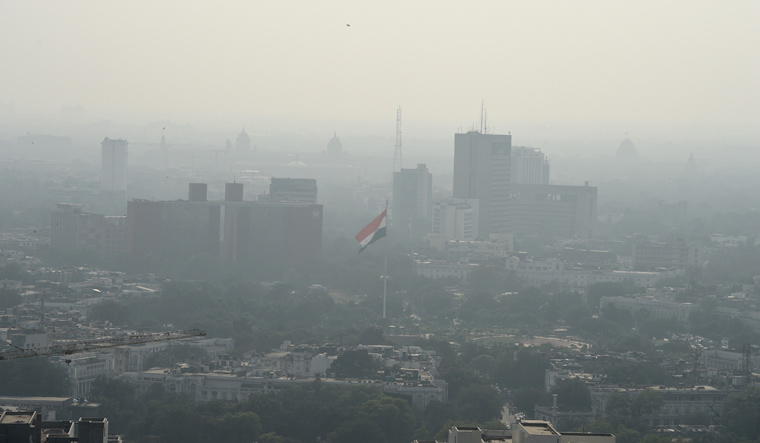With a surge of air pollution reported in Delhi, the Commission for Air Quality Management (CAQM) released a set of detailed guidelines for the National Capital Region (NCR). All construction and demolition activities, bar certain exceptions in defence-related and transport-related sectors, will be stopped under further notice. Schools, colleges and educational institutions will remain closed. Private firms were recommended to allow 50 per cent work from home for staff, and trucks carrying non-essential products will not be allowed to enter the city. More than half of the thermal power plants operating in and around the NCR were also asked to shut.
At an emergency meeting, the CAQM advised the governments of Haryana, Rajasthan and Uttar Pradesh to "consider similar restrictions/regulations in the respective NCR districts as implemented by GNCTD through its order on November 13 which includes, inter alia, closure of schools up to November 20 and closure of C&D activities from November 14 to 17", a statement said.
The commission asked the states and agencies concerned to be in complete readiness for implementing emergency measures as listed under GRAP. The air quality is considered to be in the emergency category if the PM2.5 and PM10 levels continue to be above 300 micrograms per cubic metre and 500 micrograms per cubic metre respectively for 48 hours or more.
The measures to be taken in the "emergency" situation include stopping entry of trucks in Delhi, ban on construction activities and introduction of the odd-even car rationing scheme.
The commission also said the adverse air quality scenario in Delhi-NCR was also "greatly impacted" by a dust storm moving in from the south-westerly directions of the Thar desert, which brought in huge quantities of dust that further amplified the PM2.5 and PM10 levels significantly.
The commission said five areas, stubble burning, construction and demolition activities, dust from roads and open areas, vehicular pollution and industrial emissions, need better focus with intensified efforts by the agencies concerned.




